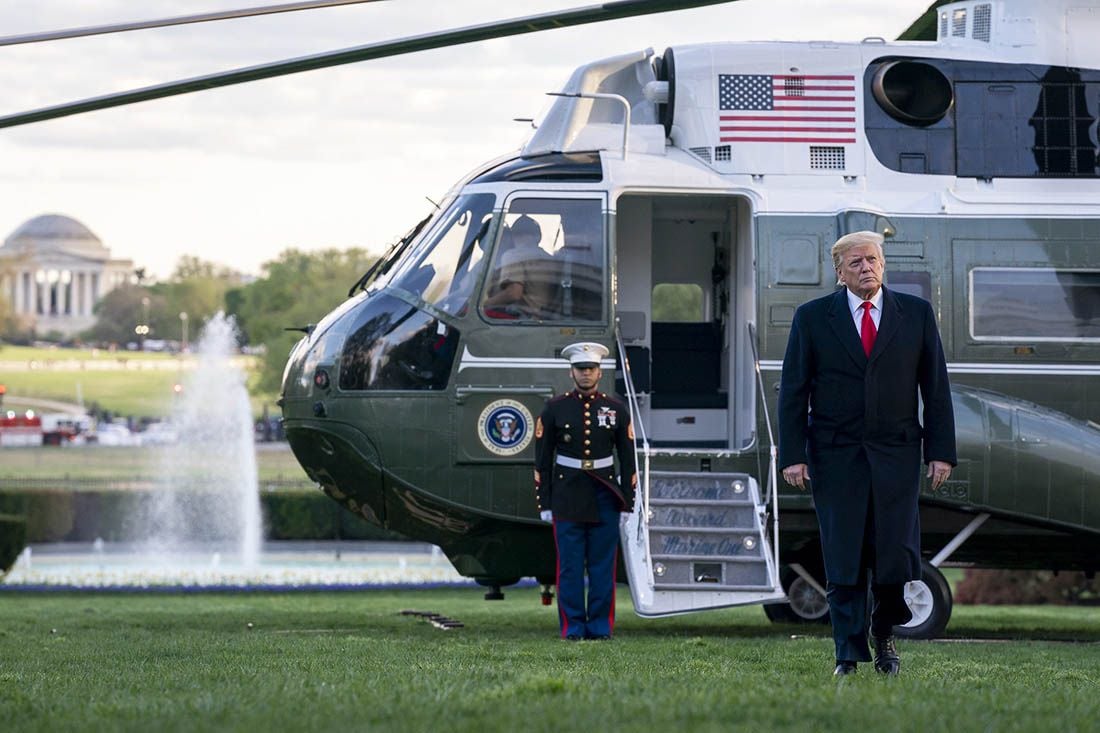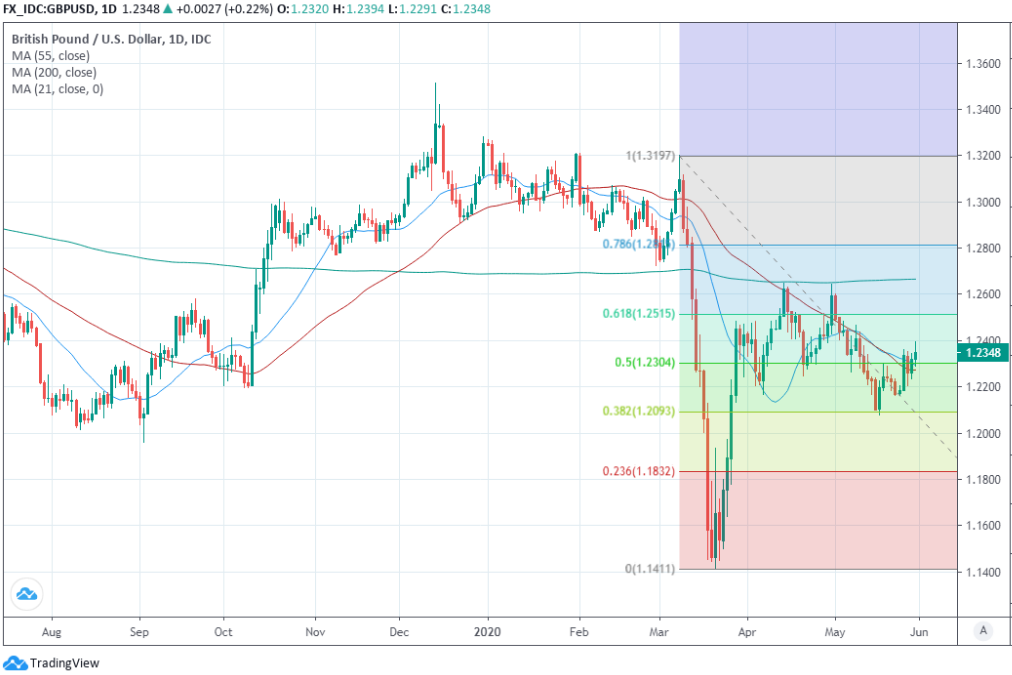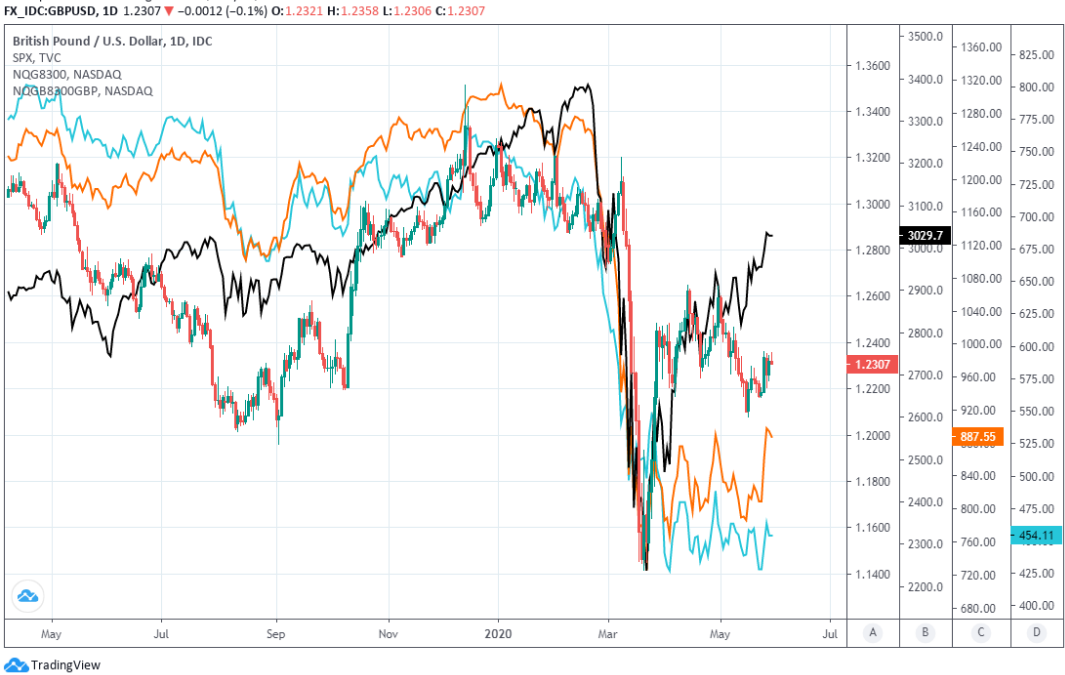Pound-to-Dollar Week Ahead: In Recovery Mode amid U.S. Unrest but Gains to be Short-lived
- Written by: James Skinner
- GBP turns tables on USD, eyes challenge of 1.24 and above this week.
- But has failed at 1.24 before & faces resistance near 1.25, above 1.26.
- Could benefit from UK reopening, risk appetite & unrest in U.S. early on.
- But Brexit talks, U.S.-China tensions, BoE mean rally to be short-lived.

Image © White House
- GBP/USD spot at time of writing: 1.2348
- Bank transfer rates (indicative): 1.2017-1.2103
- FX specialist rates (indicative): 1.2164-1.2238 >> More information
The Pound-to-Dollar rate staged a decisive reversal last week as Sterling recovered lost ground from a tiring greenback and could go on to extend its recovery over the coming days, although the upside is limited and fundamental headwinds could blight the British currency again ahead of the weekend.
Pound Sterling turned the tables on the Dollar last week after the Bank of England (BoE) tempered concerns about a possible shift to negative interest rates while investors overlooked a rise in U.S.-China tensions and chased stock markets higher amid further efforts to reopen economies. This encouraged a turn lower by the greenback, which had its worst week since early 2017 if a brief spell of losses during the March crisis-period is put to one side.
That trend could endure early this week as investors respond to a tentative reopening of the UK economy and civil unrest in the U.S., where cities burned at the weekend and the national guard was deployed to restore order. The Dollar might be penalised for this given it distracts from the coronavirus and is a solely domestic affair, while President Donald Trump's response to China's actions in Hong Kong may keep risk appetite alive elsewhere.
"US/China tensions have only just begun to take the fizz out of the recovery in risky assets. The safe haven USD is trading well off its recent highs, with EUR/USD finding additional support from news on the European Commission’s budget proposal. However, as geopolitical tensions ratchet higher, the USD could still see another boost," says Jane Foley, a senior FX strategist at Rabobank, who sees the Pound falling back to 1.20 in one month time.
Investors were heartened Friday when President Trump's response to China's actions in Hong Kong was perceived to be on the milder side of expectations, which lifted stock markets in moves and a mood that could endure this week. The Dollar has a negative correlation with risk assets so further gains in global stock markets would add another layer to negative sentiment toward the U.S. currency in what could prove a boon for Sterling early on, although many also see risks of a Dollar comeback.
Meanwhile, the Pound-to-Dollar rate has turned back from the brink and achieved a daily close above both its 21 and 55-day moving-averages, potentially placing it on course for further gains. Sterling enters the new week at 1.2348 against the Dollar but has struggled to get above 1.24 upon recoveries in recent weeks and might meet resistance from a range of other technical obstacles including the 61.8% Fibonacci retracement of the March downtrend that succesfully blocked its path many times before.
"Above 1.2335 focus can shift to the top of the range at 1.2643/61. Initial resistance lies at 1.2468 the 8 th May high," says Karen Jones, head of technical analysis for currencies, commodities and bonds at Commerzbank, who says Sterling should find support around 1.2217 on any dips lower. "A daily chart close above the 200 day moving average at 1.2662 is required to target the 78.6% Fibonacci retracement at 1.2818 (not favoured)."
Above: Pound-to-Dollar rate at daily intervals with Fibonacci retracements of March downtrend and moving-averages.
"GBPUSD has shown some resiliency in the past two weeks, blunting downward pressure that had started to emerge through the middle of May after the GBP broke under 1.2250—the neckline of the 1.2650 double top. While the GBP has nudged higher, and even traded back above 1.2250 briefly this week, we still think the broader technical picture remains bearish," says Jaun Manuel Herrera, a strategist at Scotiabank. "Trend momentum has stalled on the daily oscillators but longer run DMI signals remain aligned bearishly for the GBP. We still think sub -1.20 levels are a risk in the next few weeks."
The UK is the last major economy to begin easing restrictions on daily life and for that reason had risked becoming the 'sick man of Europe' if-not the world so tenative steps to reopen might be welcomed by the market this week.
But appetite for Sterling will be tested by the fourth and final round of Brexit talks to take place before a stock-taking excercise on the part of Prime Minister Boris Johnson and European counterparts.
"We caution that negotiations have seemed to break down before only for 'a deal' to be done at the last minute. So we rule nothing out. But we assume the UK will not request an extension of negotiations. We assume the UK will not call off negotiations either. We expect talks to continue and a bare-bones free trade agreement to be reached by year-end. Such an agreement would likely involve zero or low tariffs but the reimposition of a range of non-tariff barriers," says Kamal Sharma, a strategist at BofA Global Research. "Having succumbed to the usual May seasonal factors, we expect the pound to remain under pressure in the run up to the June deadline and particularly versus EUR, CHF and JPY. More significantly, we expect GBP volatility to outperform its G10 peers as idiosyncratic risks (Brexit) continue to build. "
Johnson will decide in June if it's worth continuing with the talks or renewing 'no deal' Brexit preparations ahead of the December 31 end to the standstill transition period, and analysts say the market's focus on Brexit could now begin to increase as a result. That might mean the Pound-to-Dollar rate becomes more sensitive to each lamentation of only "limited progress" from the EU side just as the June 18 BoE monetary policy decision draws near, which is expected to yield another increase in the bank's quantitative easing programme and potentially, an attempted vindication of negative interest rates as a policy tool.
"Last week we provided reason for being GBP bears related to the increased speculation on negative rates in the UK. That will intensify going forward if the recovery from lockdowns does not go according to plan. But the other issue for the pound we didn’t touch on is Brexit and we expect a notable jump in focus on Brexit over the coming four weeks as the UK reaches a key moment," says Derek Halpenny, head research, global markets EMEA and international securities at MUFG. "Increased Brexit focus, plus the negative rate potential further ahead will be enough to ensure the pound continues to underperform."
Meanwhile, fears are that it's only a matter of time until President Donald Trump tears up January's 'phase one' deal that largely ended the trade war between the world's two largest economies, which would risk stoking renewed safe-haven demand for the greenback and add another layer of negativity to sentiments toward risk currencies like Sterling. President Trump responded lightly on Friday to China's insertion of its oppressive security apparatus into Hong Kong, in contravention of the one-country-two-systems agreement, but continues to covet international support for action against China.
Above: Pound-to-Dollar rate with S&P (black line), NASDAQ Global Banks (orange) and NASDAQ UK banks (blue line).






